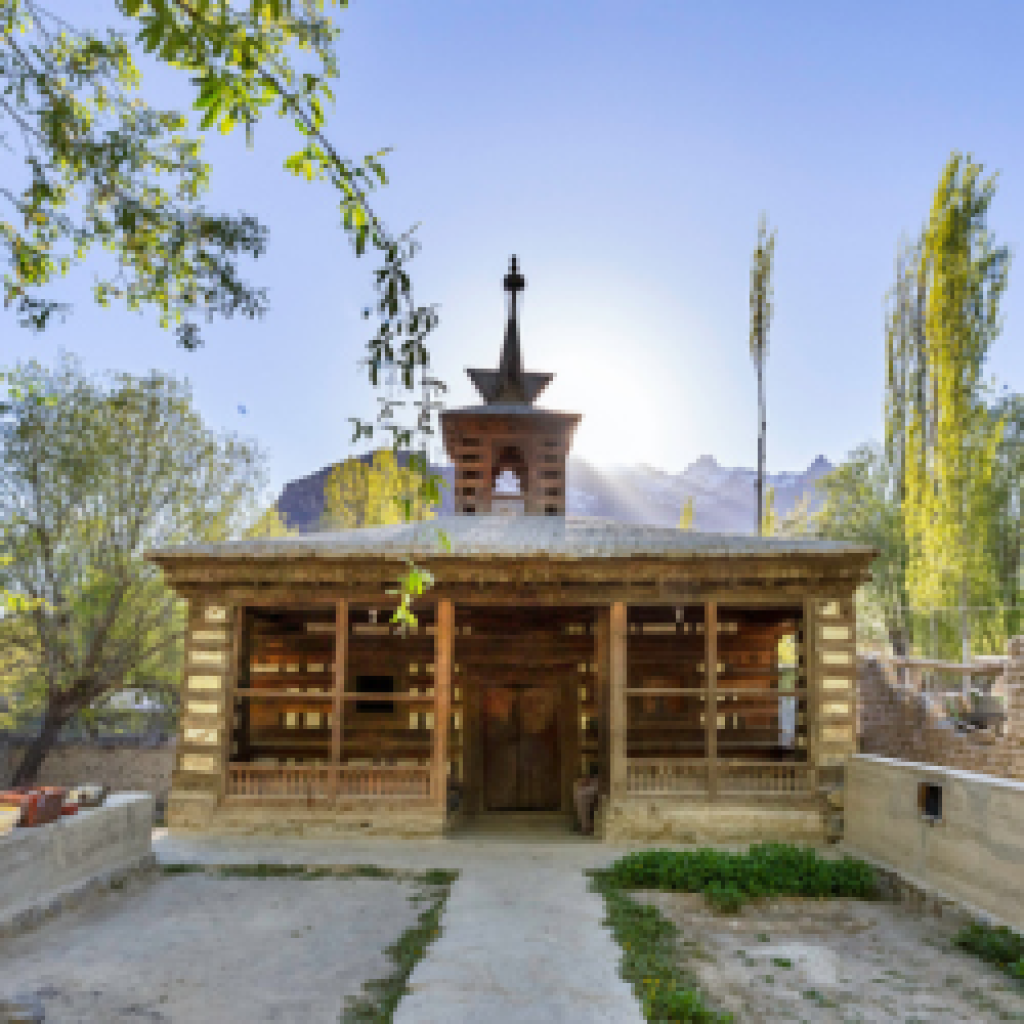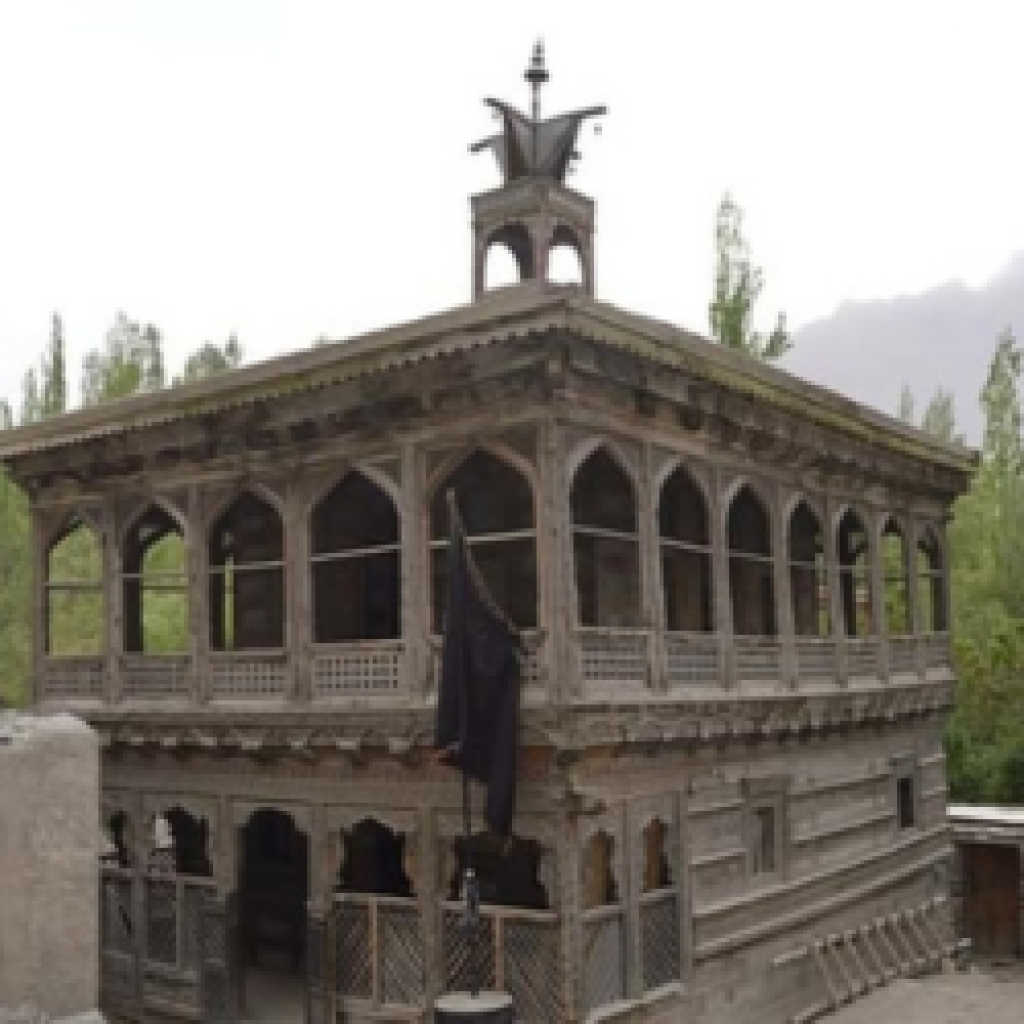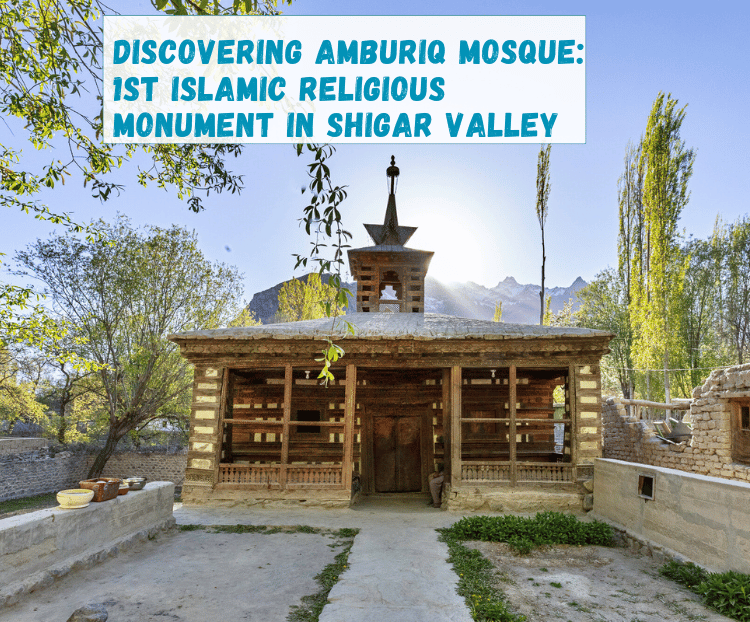Explore the rich history and stunning architecture of Amburiq Mosque, a hidden treasure that showcases the beauty of Islamic design and culture. Learn about its unique features and historical significance in this detailed blog.



Table of Contents
Introduction – Amburiq Mosque
The world is full of architectural wonders that represent different cultures, religions, and time periods. One such hidden gem is the Amburiq Mosque, a breathtaking example of Islamic architecture. Nestled in a remote corner of the world, this mosque stands as a testament to the beauty and diversity of Islamic design. In this blog, we’ll take you on a journey to discover the history, architectural features, and cultural significance of the Amburiq Mosque.
History of Amburiq Mosque
The 14th-century Amburiq Mosque represents the first Islamic religious monument in the Shigar Valley built by Iranian craftsmen who were traveling with the Kashmiri preacher, Syed Ali Hamdani. Amburiq Mosque, located in the tranquil village of Amburiq, is a historical masterpiece. This mosque was constructed during the Khwarezmian Empire, a powerful state in Central Asia. It was an era when Islamic architecture flourished, resulting in the creation of stunning structures like the Amburiq Mosque.
The mosque’s construction was commissioned by local rulers who were keen on promoting Islamic culture and knowledge. Its name, “Amburiq,” is derived from the village’s name where it is situated. Over the centuries, the mosque has undergone several renovations and preservation efforts to retain its historical significance.
Architectural Marvels of Amburiq Mosque
The Amburiq Mosque is a true testament to the artistic and architectural excellence of its time. It features a combination of various Islamic architectural styles, resulting in a unique and captivating design.
1. Geometric Patterns: The mosque’s exterior is adorned with intricate geometric patterns, a hallmark of Islamic architecture. The use of geometric shapes such as stars, polygons, and arabesques adds an aesthetic charm to the building.
2. Iwan Entrance: The mosque features a prominent iwan entrance, a common architectural element in Islamic buildings. This towering archway serves as the main entrance and is adorned with decorative tiles and inscriptions from the Quran.
3. Minarets: Amburiq Mosque has two minarets, each adorned with detailed brickwork and calligraphy. These minarets are not only functional but also symbolize the significance of the mosque in the community.
4. Mihrab: The mihrab, a niche in the wall indicating the direction of Mecca, is exquisitely designed with intricate tile work and calligraphy. It is the focal point of the mosque’s interior and adds to its visual appeal.
5. Courtyard: The mosque features a central courtyard, which is surrounded by a covered prayer hall. The courtyard is an inviting space for worshipers to gather and engage in communal prayers and religious activities.
6. Decorative Tiles: The interior of Amburiq Mosque is adorned with beautifully crafted decorative tiles that depict Quranic verses and intricate floral motifs. These tiles create a mesmerizing atmosphere within the prayer hall.
Cultural Significance
Amburiq Mosque is not just a structure; it holds immense cultural significance for the local community and the broader Islamic world. It serves as a place of worship, education, and social gatherings, promoting the values and teachings of Islam. The mosque has played a vital role in preserving the cultural heritage of the region and serves as a reminder of the Islamic civilization’s contributions to art and architecture.
The mosque hosts regular religious events, including Friday prayers, educational lectures, and community gatherings. It acts as a spiritual anchor for the residents of Amburiq and the surrounding areas.
Preservation and Restoration Efforts
The total covered area of the Mosque is 63m². Building restoration was started in April 1998 and was completed in August 2000. Of the total restoration cost of US$ 18’300, the Royal Norwegian Embassy, Islamabad provided US$ 16’250, while the remaining amount was contributed by the local community. Aga Khan Cultural Services-Pakistan provided technical assistance and oversight of the project. The project won the Award of Merit in the UNESCO Asia-Pacific Heritage Awards of 2005.
Source: Aga Khan Cultural Services-Pakistan
Visiting Amburiq Mosque
If you’re planning to visit Amburiq Mosque, it’s important to respect the local customs and guidelines. The mosque is open to visitors, and you can take a guided tour to learn more about its history and architectural features. Remember to dress modestly and remove your shoes before entering the prayer hall. Taking photographs is generally allowed, but it’s polite to ask for permission first.
In conclusion, Amburiq Mosque stands as a hidden gem of Islamic architecture, offering a glimpse into the rich history and culture of the region. Its stunning design and cultural significance make it a must-visit destination for anyone interested in exploring the beauty of Islamic art and architecture.
When you visit Amburiq Mosque, you will not only be mesmerized by its architectural beauty but also gain a deeper appreciation for the diverse cultural heritage of the Islamic world. It is a living testament to the enduring legacy of Islamic civilization and its contributions to art and architecture.
Discover the hidden treasures of Amburiq Mosque and embark on a journey through time and culture as you explore this remarkable architectural wonder in Skardu.


0 Comment